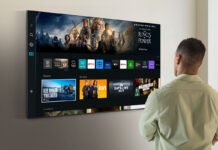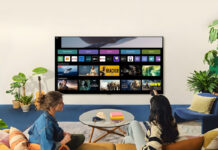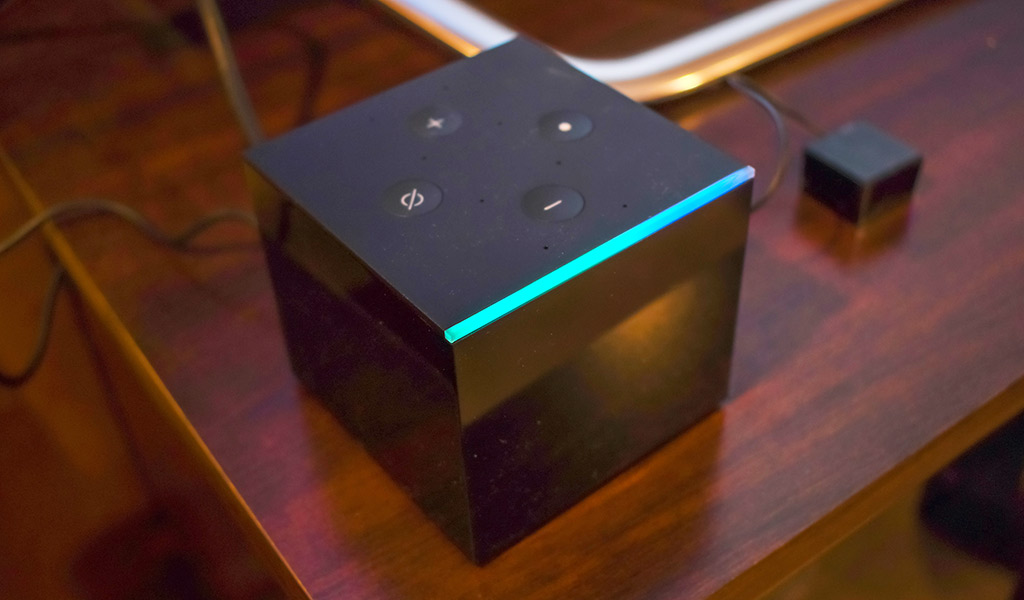
Amazon’s new Fire TV Cube brings both a smart TV platform and the Alexa voice assistant to almost every TV once you hook it up.
While this is the second-generation Fire TV Cube, it’s actually the first for Canada because the original model never made it across the border. The device is a streaming box with Alexa built-in, combining the two in ways that can change how you navigate the interface. There is a remote control, but your voice can be equally effective in getting what you want out of it.
Design and setup
If you looked at this as an Echo speaker under a different guise, you wouldn’t be wrong. Except the Fire TV Cube isn’t supposed to be a one-dimensional product. It is cube-shaped, unlike the puck-shaped Echo Dot, yet offers far more once you connect it to a TV.
It measures about 3.4 x 3.4 x 3.0 inches, so almost a perfect square, and comes with an infrared (IR) blaster to work with the included remote and cable boxes. The blaster plugs in the back, with the thin cable long enough to set up the small IR blaster away from the Fire TV Cube, if you want.
There’s no Ethernet port, but there is a microUSB-to-Ethernet adapter that can manage that. The box does have Wi-Fi as well, so you don’t have to use a wired connection if you don’t want to. Notably missing is an HDMI cable out of the box. You will have to use your own, and just as critically, it will need to be a more current one because you will need to plug the device into the HDMI-ARC port on your TV.
That port is essentially a two-way connection that pulls in the audio signal from the TV, while sending its own video signal back the other way. Without that cable, this whole setup is all for naught. The top has eight far-field microphones to help hear what you’re saying in louder or spacious confines.
The remote is fairly basic, yet has some key additions. Chief among them is the microphone button that allows you to voice a command without saying “Alexa” first. Just hold down the button, say what you want to say, and that’s it.
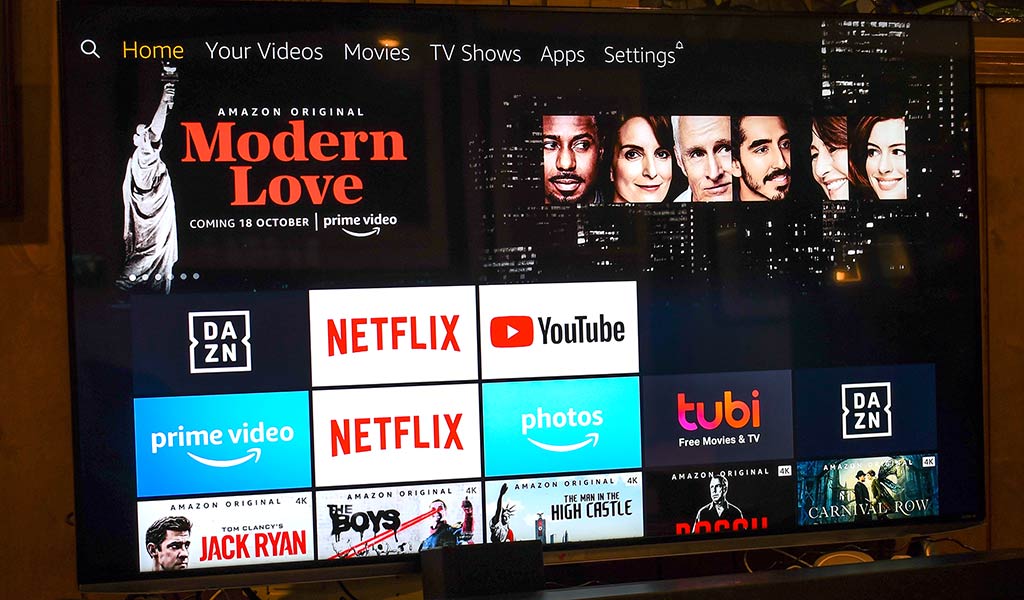
Content and apps
Amazon designed the Fire TV interface to be simplistic, almost to a fault. The grid is easy enough to understand, it’s just that you can’t customize it how you want. If you prefer to have certain apps line up at the top, or organize them a specific way, it’s not going to happen.
On the bright side, YouTube is back. Upon the recent agreement between Amazon and Google, you won’t need to use the web browser workaround to get to the popular video app. It’s not only there front and centre, but also searchable by voice.
YouTube’s presence is complemented by a lot of the big names you would expect, like Netflix, NHL Live, DAZN, Spotify, Crave, and plenty others. Prime Video naturally gets its share of attention, and if you’re a subscriber, you will notice that early on. Prime shows and movies get considerable screen space, though unlike what some might experience in other countries, I didn’t encounter any ads taking up the screen.
What is cool is that you can use Alexa to search for title, actor or genre. It doesn’t work with every single app, but it’s pretty seamless with Prime and Netflix. I asked for Robert De Niro movies on Netflix, and sure enough, it took me right over there.
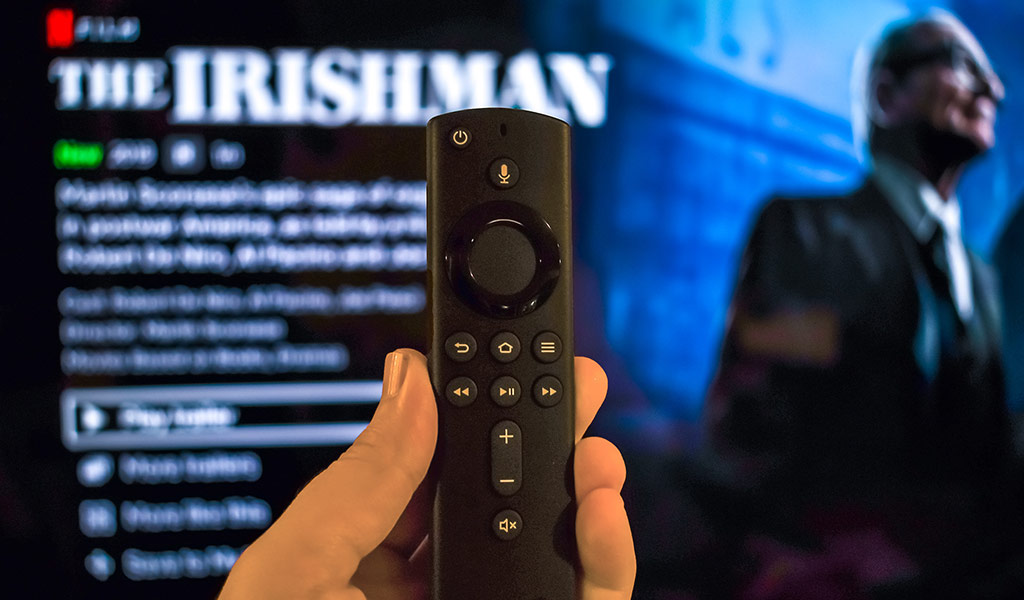
Alexa integration
That Alexa plays such a key role in the Fire TV Cube is not surprising at all. Amazon set things up to foster that kind of trust in its voice assistant. The level of control is fairly advanced, and what’s great is that Amazon made it easier to navigate within menus.
For example, if I said, “Alexa, show me more,” from the home screen, it would scroll down. Each row would have a number attached to it, so saying, “Alexa, show me number one,” would open up that row. The subsequent menu would then numerate each show or movie to, again, make them accessible that way. I could also tell it to scroll left or right. Once selected, I could then tell Alexa to add it to my watchlist or start playing.
That’s over and above the typical things Alexa already does. You can change HDMI inputs by voice, raise/lower volume or mute the sound altogether. Amazon says a feature that would also allow users to verbally change cable TV channels is coming sometime this fall.
If you use the remote, the numerical references are gone. I noticed that if I entered a menu by clicking on the remote, I couldn’t tell Alexa to access something by a number. In that regard, it doesn’t always integrate.
Since this is an Alexa-enabled device, it can control smart home devices like any other does. If you have routines already set up in the Alexa app, those are always ready to work here. You can play your Flash Briefing, get weather forecasts and ask general questions. Particularly useful if you need to confirm something about an actor or athlete while watching.
Usability and what’s ahead
There were times where the Fire TV Cube failed to catch what I said. I also had my dad try it extensively with his TV to see how easy it was for him to acclimate. For the most part, I would say it was successful, except for how Alexa can get confused when it doesn’t hear the right wording. Plus, it can make contextual mistakes, like when I asked to open DAZN (pronounced “da-zone”). It showed me a list of apps I could download, none of which had anything to do with what I asked for.
That’s where the remote’s microphone button came in handy. It was often easier to string together commands that way than talking to the cube, which was slightly delayed in comparison. Plus, when the TV is loud, it’s often the better option over yelling at Alexa to do something.
Amazon says this Fire TV Cube is faster than its predecessor, but I have no frame of reference for that, so can’t say. I imagine it would be. One thing I could speak to is the visual quality of what it offers. The device supports 4K and HDR 10+, so apps offering content supporting those standards should benefit.
As a general rule, any updates Amazon pushes out to Alexa download to the Fire TV Cube too. That keeps the voice assistant current, and with software updates for the interface itself, the device should be able to hold its own for a longer time than the Fire TV Stick can.
Final thoughts
It might seem like Amazon is putting Alexa into everything, everywhere. Ubiquitous is, perhaps, an understatement, but this is one case where it makes total sense. Command and control, with the right amount of context—all by voice—is what the Fire TV Cube aims to achieve. When it works well, it feels seamless, and when it doesn’t, there’s at least one recourse through the remote.
The cable TV integration can’t come soon enough for those who still subscribe to those services. With hundreds of channels available, I reckon changing them verbally will feel satisfying. Still, I do think Amazon should’ve included an HDMI cable in the box, and allow users to customize the home screen. Despite those gripes, this is a solid product for a smart TV platform.
Check out the Amazon Fire TV Cube available now.

